
Celypha cespitana is a moth of the family Tortricidae. It is found in the Palearctic realm, from western Europe to the Ural Mountains, Transcaucasia, Asia Minor, the Near East, Iran, Russia, north-eastern China (Manchuria), Korea and Japan. It is also found in the Nearctic realm.

Acleris rhombana, the rhomboid tortrix, is a moth of the family Tortricidae. It is found in the Palearctic realm, from Europe to the Caucasus, Armenia, and Turkmenistan.

Gypsonoma aceriana, the poplar shoot-borer, is a moth of the family Tortricidae. It is found from Europe to Russia, eastern Turkey and Iraq. It is also present in North Africa.

Epitymbia alaudana is a species of moth of the family Tortricidae. It is found in Australia.

Cochylichroa atricapitana, the black-headed conch, is a moth of the family Tortricidae. It is found in China (Xinjiang) and the eastern Palearctic and most of Europe.

Phtheochroa inopiana, the plain conch, is a species of moth of the family Tortricidae. It is found in China, Iran, Japan, Mongolia, Russia and most of Europe. It has also been recorded in North America. The habitat consists of damp areas and woodland edges.
Sycacantha sphaerocosmana is a species of moth of the family Tortricidae. It is found in Australia, where it has been recorded from Queensland.
Apocydia pervicax is a species of moth of the family Tortricidae. It is found in Australia, where it has been recorded from Queensland, New South Wales and the Northern Territory.
Toonavora aellaea is a species of moth of the family Tortricidae. It is found in Australia, where it has been recorded from Queensland and New South Wales.
Epiphyas oriotes is a species of moth of the family Tortricidae. It is found in Australia, where it has been recorded from New South Wales.
Holocola phaeoscia is a species of moth of the family Tortricidae. It is found in Australia, where it has been recorded from Queensland and New South Wales.
Thaumatotibia aclyta is a species of moth of the family Tortricidae. It is found in New Caledonia and Australia, where it has been recorded from Queensland.
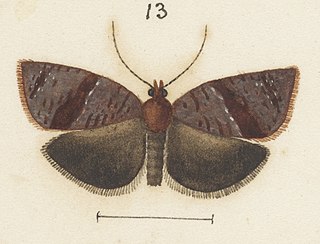
Epichorista eribola is a species of moth of the family Tortricidae. It is endemic to New Zealand and has been collected on the Westcoast of the South Island. The adults of this species are on the wing in January and inhabit damp forests.
Geogepa monticola is a species of moth of the family Tortricidae. It is found on the island of Honshu in Japan. The habitat consists of subalpine and alpine forests.
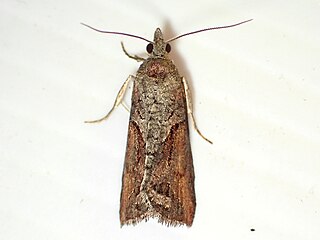
Harmologa oblongana is a species of moth of the family Tortricidae. It is found in New Zealand.
Atriscripta arithmetica is a species of moth of the family Tortricidae. It is found in New Caledonia and Australia, where it has been recorded from Queensland. The habitat consists of rainforests, as well as planted forests.
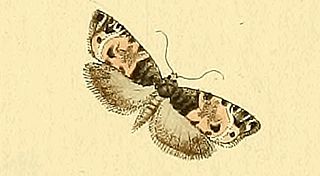
Notocelia incarnatana, the chalk rose bell, is a species of moth of the family Tortricidae. It is found in China, Mongolia, Japan, Russia, Kazakhstan and Europe, where it has been recorded from most of the continent, except parts of the Balkan Peninsula.
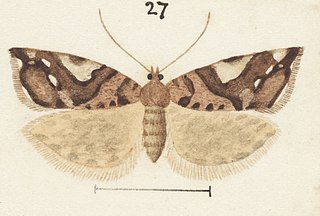
Pyrgotis arcuata is a species of moth of the family Tortricidae. It is endemic to New Zealand.

Pyrgotis zygiana is a species of moth of the family Tortricidae. It is endemic to New Zealand.
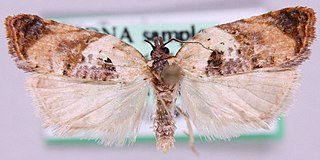
Acleris permutana is a species of moth of the family Tortricidae. It is found in Ireland, Great Britain, Portugal, Spain, France, Belgium, the Netherlands, Germany, Denmark, Sweden, Austria, Italy, the Czech Republic, Slovakia, Slovenia, Croatia, Hungary, Romania, North Macedonia and Russia. The habitat consists of coastal sandhills and limestone.











